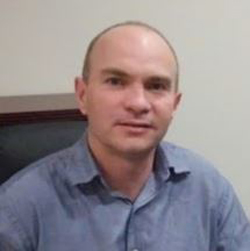*Microseismic SIG: Fiber-Optic Microseismic Monitoring - Mar 7th

Sponsored by MicroSeismic, Inc.
Event Location:
MicroSeismic, Inc.
10777 Westheimer, Suite 110
Houston, TX 77042
NOTE: You Must be Logged In to Register.
Speaker: Julian Drew, Sigmacubed
Microseismic Monitoring is one of the principal methods in monitoring and assessing the geometry of an unconventional completion. Fiber optics (F/O) in the form of distributed temperature sensing (DTS) and distributed acoustic sensing (DAS) has seen a rapid growth in its applications in recent years including long-term permanent monitoring of unconventional completions. Techniques are also evolving for the temporary deployment of fiber in a well including wireline and fiber optic encased in a carbon rod allowing for deployment akin to coil tubing.
While the use of DAS for seismic acquisition is not entirely new the sensitivity has been a limitation in its application to Microseismic Monitoring. Here the technology continues to evolve where the sensitivity of DAS will continue to improve.
A second challenge in the application of DAS for microseismic is in the processing and analysis of the data. One of the limitations is in that DAS is a single axis measurement as either strain or strain rate. In the case of a horizontal deployment we tend to predominantly observe a shear horizontal (SH) polarized arrival along with some component of the P-wavefield. As the measurement moves to the vertical this changes to the P-SV wavefield. In not having a full three component measurement we also cannot determine the direction of arrival beyond what can be resolved from the apparent velocity.
Another issue is in understanding the physics of the measurement in relation to the shear-arrival. To fully characterize the seismic source, we would need to recover the amplitudes and seismic spectra.
We will look at some recently acquired data including data recorded on multiple fiber array in combination with downhole three component geophone array. We will look briefly at signal processing addressing noise and signal detection in addition to some of the limitations of DAS for microseismic applications.
Speaker Biography: Julian Drew, Sigmacubed
Julian Drew is the Director of Microseismic Technology at Sigmacubed. He formerly worked at Schlumberger including Wireline Borehole Seismic, Engineering and in Research. He has been involved for more than ten years in Microseismic developing some of the key algorithms and software technology in use today at Schlumberger and at Sigmacubed. Julian received a dual BaSci (Physics) and BaEng (Mech) from the University of Western Australia, and a PhD (Geophysics) from the University of Cambridge.
THANK YOU TO OUR GENEROUS SPONSOR:
